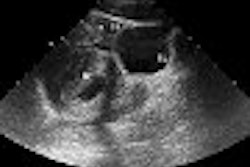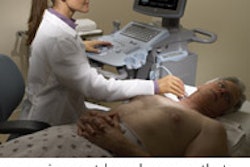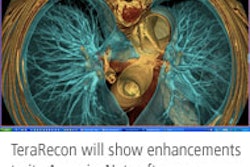When looking at the many possibilities in an atherosclerotic heart, how can one tell which segment is likely to be the specific source of an acute myocardial infarction? A new study says that indicative patterns are visible with intravascular ultrasound (IVUS).
Indeed, the coronary calcification patterns seen at the culprit lesion in acute myocardial infarction (AMI) are significantly different from the patterns in unstable angina pectoris (UAP) or stable angina pectoris (SAP), according to the study (Circulation, November 30, 2004, Vol. 110:22, pp. 3424-3429).
These patterns could allow physicians to identify additional vulnerable sites in a patient undergoing an interventional procedure targeting a culprit lesion, suggested the authors, led by Dr. Shoichi Ehara and Dr. Junichi Yoshikawa of Osaka City University Graduate School of Medicine in Osaka, Japan.
"To the best of our knowledge, the present IVUS study is the first to demonstrate the relationship between calcification patterns, arterial remodeling, and the morphology of plaques within the culprit lesion segment," wrote the authors.
"The major finding is that there is a significant difference in the pattern of coronary calcifications at the culprit lesion segment, particularly with respect to size, number, and length of the deposits, among patients with AMI, UAP, and SAP," they wrote.
The researchers performed IVUS imaging prior to interventional procedures in 199 patients with AMI, UAP, or SAP. The IVUS images were unusable in 21 patients due to either poor image quality or severe calcification.
The culprit vessel in each patient was identified on the basis of clinical, ECG, and angiographic data. For SAP patients, the culprit vessel was considered to be the ischemia-related vessel identified by exercise scintigram stress test, the authors wrote.
The culprit lesion segments were then categorized as one of four types:
- No calcification
- Spotty calcification
- Intermediate calcification
- Extensive calcification
"The frequency of the pattern of culprit lesion calcification was significantly different (p < 0.0001)," the authors noted. "In AMI patients, spotty calcification was the most frequent (51%). In UAP patients, the frequencies of no calcification and spotty calcification were nearly equal. Conversely, in SAP patients, the frequency of extensive calcification was the highest (38%)."
"Small calcium deposits were significantly more frequent in the culprit lesion segments in ACS (acute coronary syndrome) than in SAP patients," the authors continued. "In fact, our qualitative analysis of calcifications demonstrated that the culprit segments of AMI patients were mostly characterized by small calcium deposits, associated with fibrofatty plaques and PR (positive remodeling)."
The authors noted that their findings were supportive of earlier IVUS studies that found less calcification in the culprit lesions of acute coronary syndrome patients compared with SAP.
In addition, a recent study using CT found that "a first AMI most often occurs in mildly calcified or noncalcified culprit arteries, whereas extensive calcifications characterize the coronary arteries of SAP patients."
Overall, the authors wrote, "IVUS is a useful tool for investigating plaque characteristics, and the present observations could be of help in differentiating stable from unstable sites."
"It is not the identification of calcium per se that counts but rather the size and extent of the deposits," the authors concluded. "This refinement in judgment and interpretation of calcifications provides incremental value to IVUS evaluation of arterial segments."
By Tracie L. Thompson
AuntMinnie.com staff writer
January 4, 2005
Related Reading
Intravascular ultrasound procedures assigned Medicare codes, November 30, 2004
Echogenic liposomes target atherosclerotic plaque for diagnosis, treatment, March 1, 2004
Intravascular ultrasound safe for assessing CAD in cardiac transplant recipients, June 13, 2003
Multiple plaque ruptures identified during acute coronary syndromes, July 23, 2002
Copyright © 2005 AuntMinnie.com



















